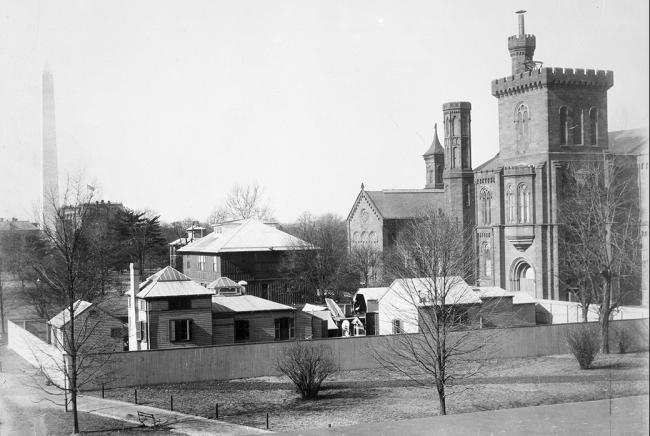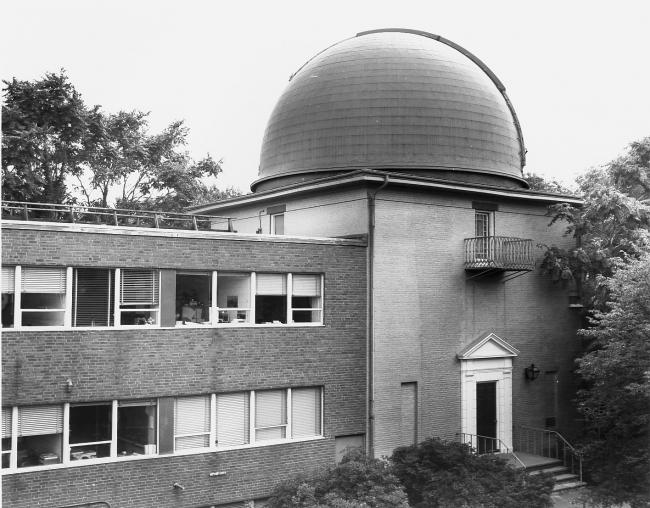Smithsonian Astrophysical Observatory History
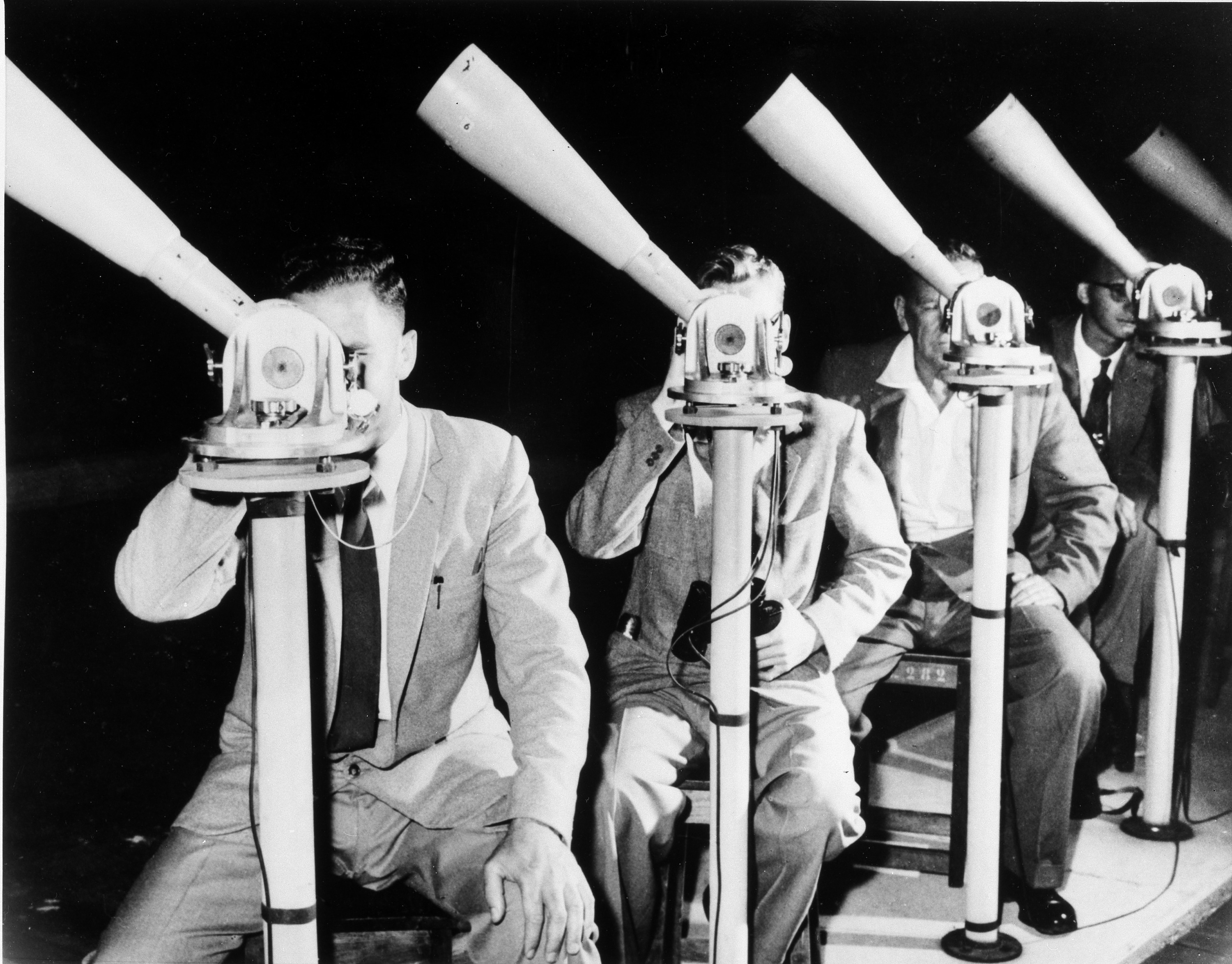
Volunteer satellite trackers in Pretoria, South Africa for the Smithsonian Astrophysical Observatory's Moonwatch Network, one of more than 100 teams worldwide in 1965. Volunteers used the "fence method" of observing the sky where each observer covered a small, overlapping portion of a specific sky quadrant, watching for the passage of the satellite in their telescope.
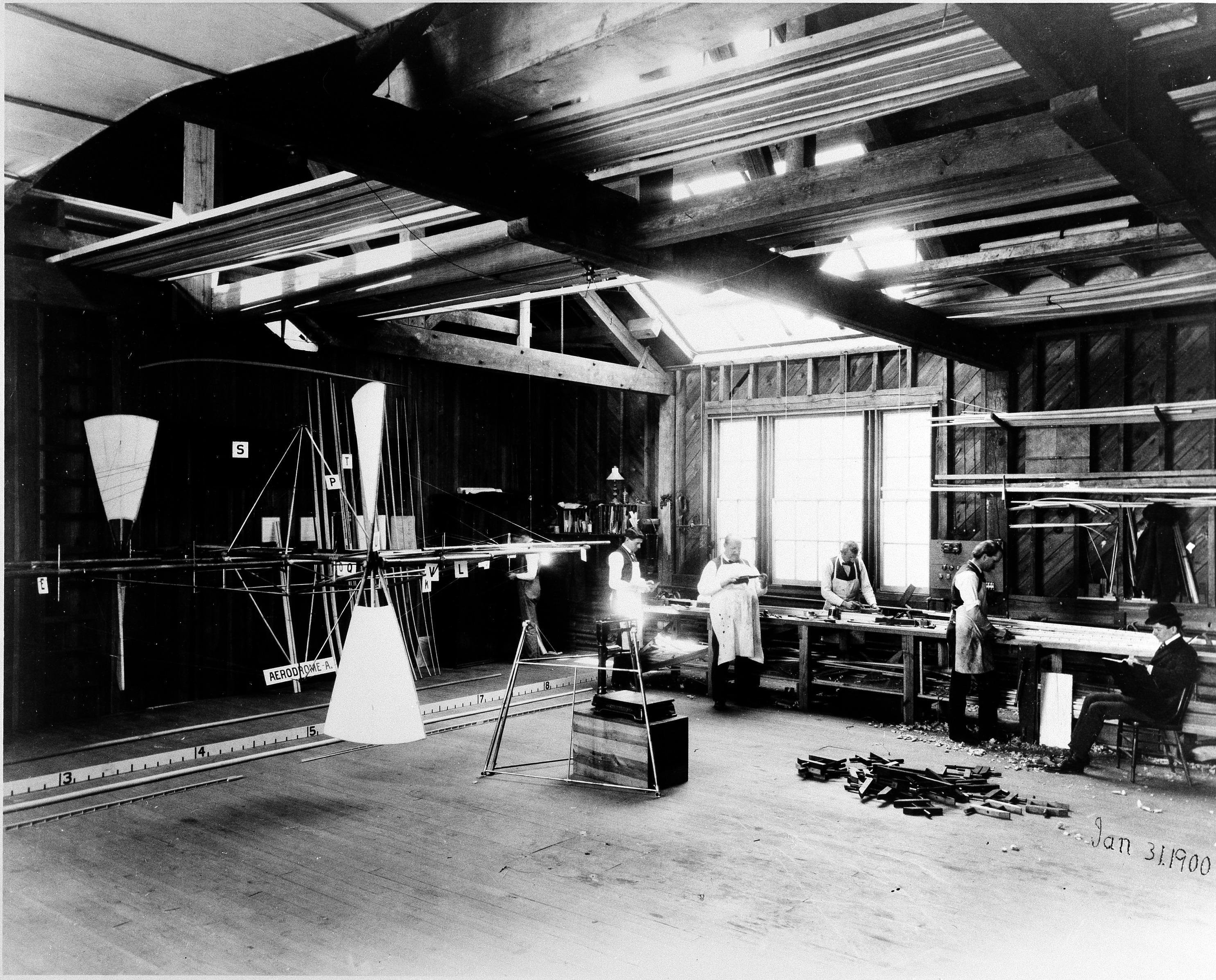
Samuel P. Langley's Aerodrome Shop in the South Shed. Built in 1898, the shed was located in the South Yard behind the Smithsonian Institution Building. Langley was an astrophysicist and third Secretary of the Smithsonian Institution. He was also founder of the Smithsonian Astrophysical Observatory.

Smithsonian Astrophysical Observatory Director Fred Lawrence Whipple stands between President John F. Kennedy and Secretary Leonard Carmichael outside the White House in the Rose Garden to receive the "Distinguished Federal Civilian Award."
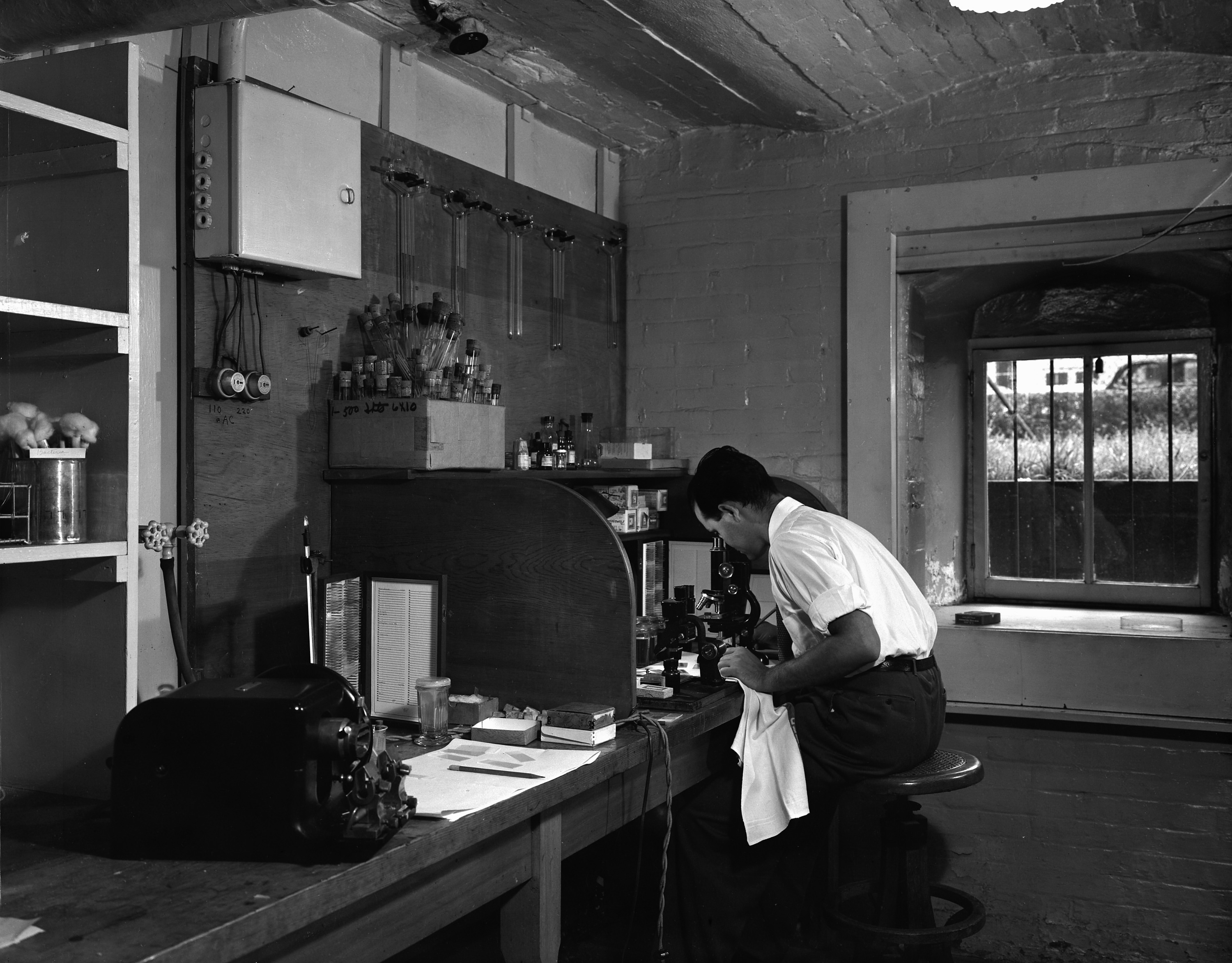
A corner of the Division of Radiation and Organisms laboratory, once housed within the SAO in the basement of the Smithsonian Institution Building. Smithsonian Secretary Charles Greeley Abbot established the division to investigate the effects of radiation upon living organisms, mainly plants.
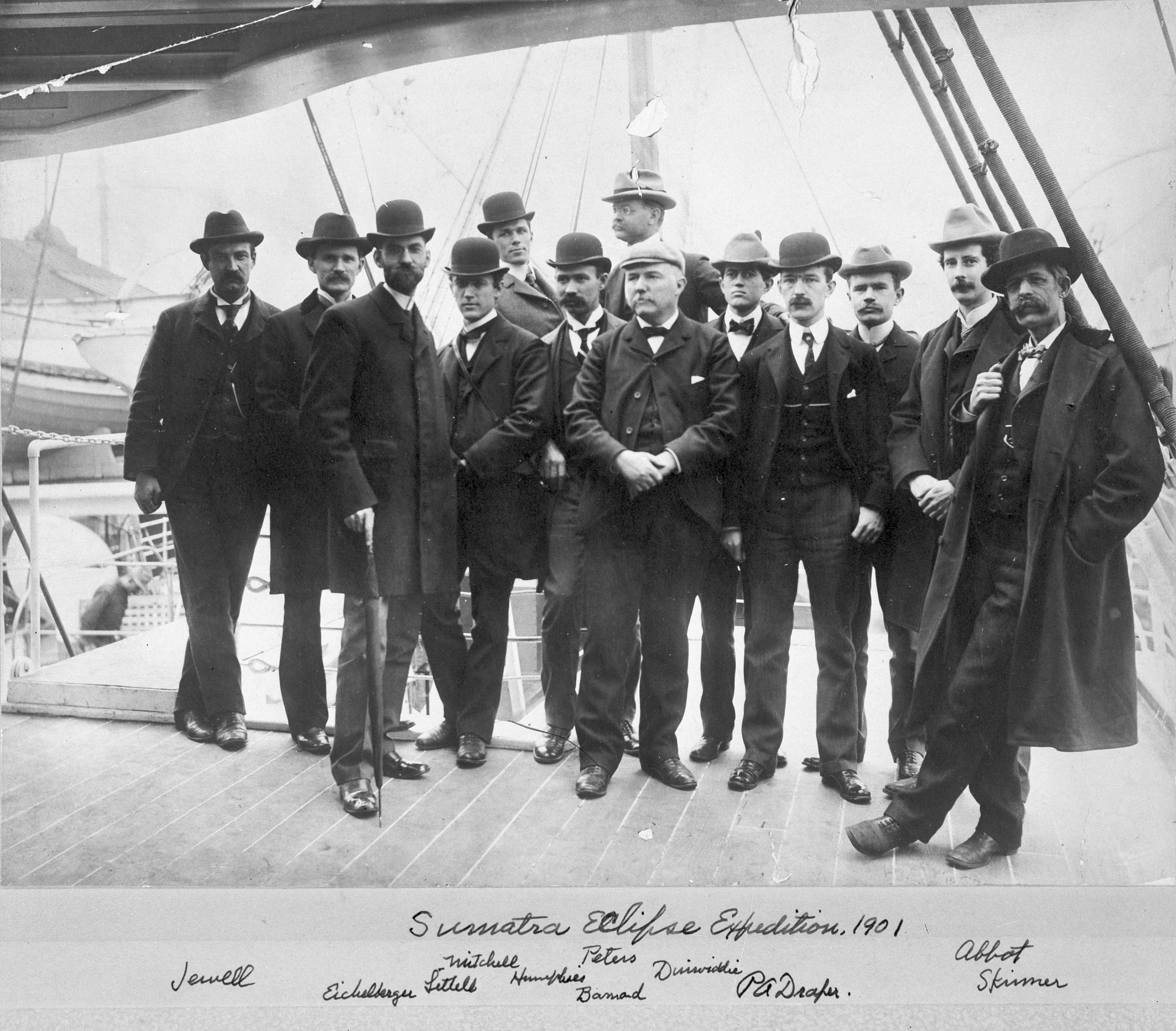
Members of the SAO's Sumatra Eclipse Expedition in 1901: (l-r) Jewell, Eichelberger, Dr. Mitchell, Littell, Dr. Humphries, Peters, Professor Barnard, Dinwiddie, Paul A. Draper, Astrophysicist Charles Greeley Abbot (Aid Acting in Charge of the Smithsonian Astrophysical Observatory, later to become the Director of the SAO and Fifth Secretary of the Smithsonian), and Professor Skinner.
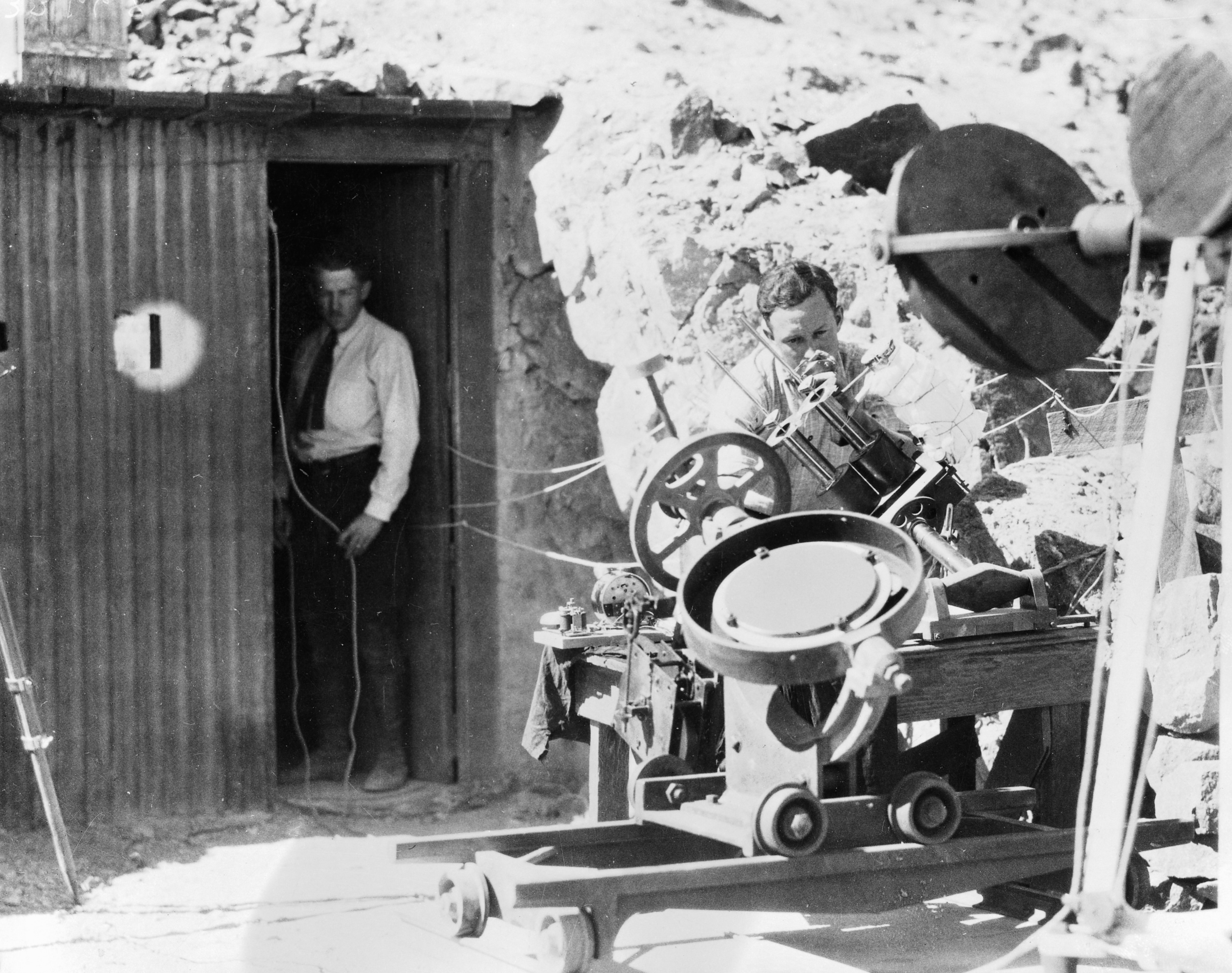
Solar observation instruments at the Smithsonian Astrophysical Observatory solar station, located in Mt. Montezuma, Chile from 1920 to 1955.
